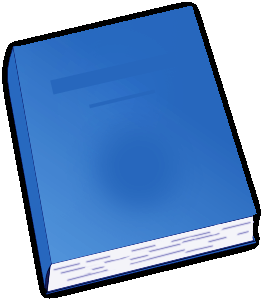|
Books Should Be Free Loyal Books Free Public Domain Audiobooks & eBook Downloads |
|
|
Books Should Be Free Loyal Books Free Public Domain Audiobooks & eBook Downloads |
|
Division of Words Rules for the Division of Words at the Ends of Lines, with Remarks on Spelling, Syllabication and Pronunciation By: Frederick W. Hamilton (1860-1940) |
|---|

In "Division of Words: Rules for the Division of Words at the Ends of Lines, with Remarks on Spelling, Syllabication and Pronunciation," Frederick W. Hamilton delves into the intricate rules governing word division, offering an invaluable resource for writers, editors, and anyone interested in mastering the art of language.
Hamilton's book provides a comprehensive and practical guide to correctly breaking words at the end of lines, ensuring aesthetically pleasing and legible text. By explaining the rules of syllabication, he empowers readers to understand the principles behind dividing words, regardless of the typography or layout constraints they may encounter.
What sets this book apart is not only the clear and concise rules it presents but also the author's deep dive into spelling and pronunciation. Hamilton's expansion on these topics establishes a holistic understanding of word division, which serves as a foundation for effective communication. With his well-researched explanations and examples, he eradicates any grey areas or confusion that readers may have had previously.
Furthermore, Hamilton's approach is reader-friendly and accessible. Rather than simply presenting a dry list of rules, he incorporates a conversational tone, engaging readers and making the subject matter more relatable. This conversational style, coupled with numerous examples and practice exercises, ensures that readers can easily apply what they have learned.
One aspect that could be improved upon is the organization of the book. Although Hamilton covers a broad range of topics, some sections feel disjointed and lack a logical flow. A clearer structural organization would have enhanced the reader's experience and facilitated their comprehension of the material.
However, despite this minor drawback, "Division of Words" remains an indispensable resource for anyone invested in honing their writing skills. Hamilton's expertise shines through, providing readers with a valuable reference guide for word division, spelling, syllabication, and pronunciation. From aspiring writers seeking to perfect their craft to professionals in the publishing industry, this book offers a wealth of knowledge that will undoubtedly elevate their linguistic prowess.
In conclusion, "Division of Words: Rules for the Division of Words at the Ends of Lines, with Remarks on Spelling, Syllabication and Pronunciation" by Frederick W. Hamilton is a highly recommended book for language enthusiasts and professionals alike. With its comprehensive coverage, practical examples, and engaging style, Hamilton's work proves to be an invaluable companion for anyone striving to communicate effectively and impeccably. 1. Some examples which appear not to follow the preceding guideline are printed thus in the original book. It looks as if sometimes the guideline is mistaken. 2. Italicized text is rendered as text , bold text is rendered as =text=. 3. Accented syllables are marked with a single quote ('). 4. This book uses several diacritical marks for phonetics, the table below lists the codings used: (the "x" represents a character with a diacritical mark) Diacritical mark Above Below Macron (straight line) [=x] [x=] 2 dots (diaeresis, umlaut) [:x] [x:] Breve (u shaped symbol) [)x] [x)] Tilde [~x] [x~] Small capital I [Ix] TYPOGRAPHIC TECHNICAL SERIES FOR APPRENTICES PART VI. NO. 35 DIVISION OF WORDS RULES FOR THE DIVISION OF WORDS AT THE ENDS OF LINES, WITH REMARKS ON SPELLING, SYLLABICATION AND PRONUNCIATION BY FREDERICK W. HAMILTON, LL.D. EDUCATIONAL DIRECTOR UNITED TYPOTHETÆ OF AMERICA PUBLISHED BY THE COMMITTEE ON EDUCATION UNITED TYPOTHETAE OF AMERICA 1918 COPYRIGHT, 1918 UNITED TYPOTHETAE OF AMERICA CHICAGO, ILL. PREFACE The principal purpose of this book is to give in brief form the rules and usages governing the division of words when the measure will not permit ending the word and the line together... Continue reading book >>
|
| eBook Downloads | |
|---|---|
|
ePUB eBook • iBooks for iPhone and iPad • Nook • Sony Reader |
Kindle eBook • Mobi file format for Kindle |
|
Read eBook • Load eBook in browser |
Text File eBook • Computers • Windows • Mac |
| Review this book |
|---|